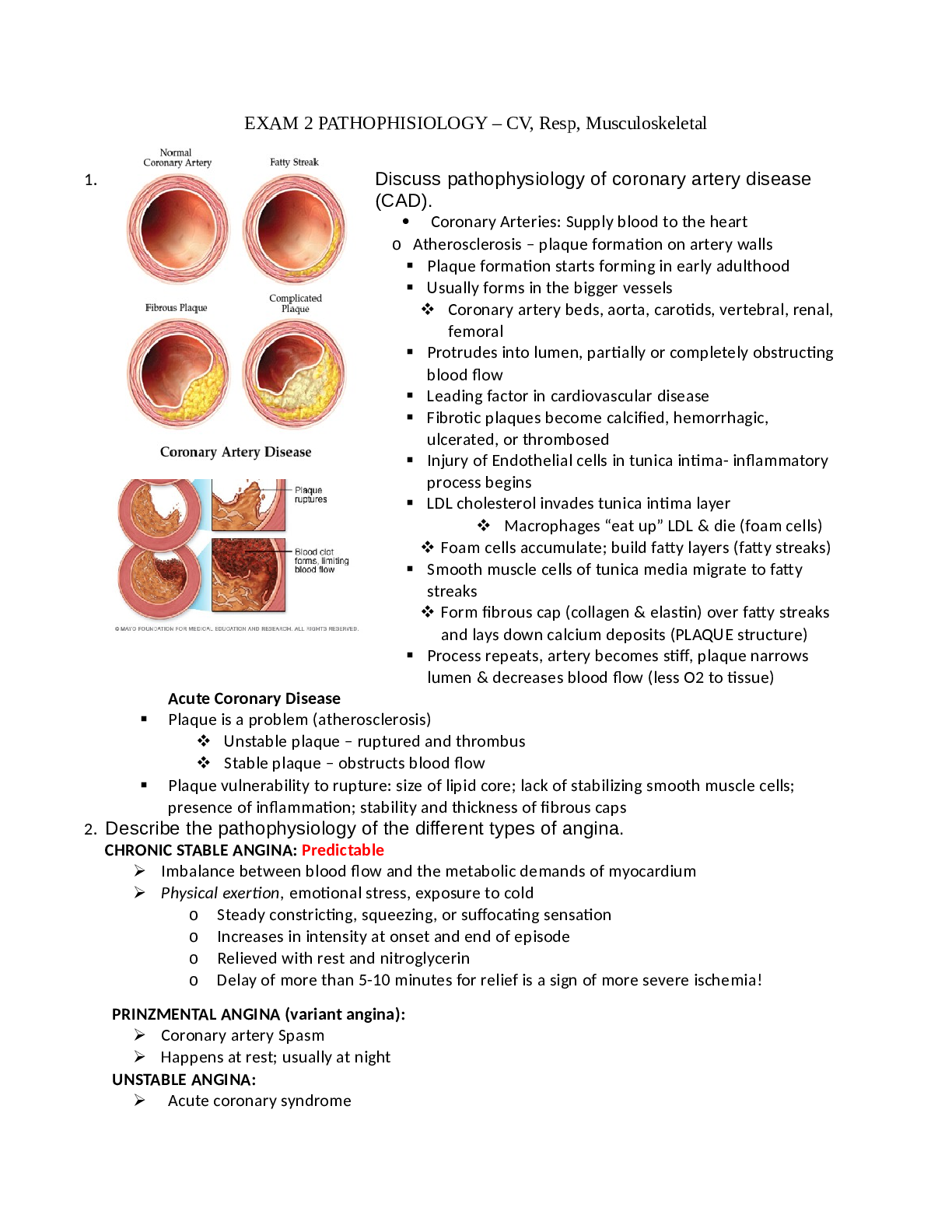Biology > STUDY GUIDE > Rutgers University - EXAM 2Exam 2 Notes biology (All)
Rutgers University - EXAM 2Exam 2 Notes biology
Document Content and Description Below
Chapter 9- Population, distribution, and abundance – Population- group of interacting individuals of the same species living in a particular area – positive interactions- allele effects, quorum... sensing in bacteria, helpers – Distribution- geographic area where individuals of a species occur – Abundance- number of individuals in a given area or volume – Ecology- the study of the factors that determine distribution and abundance of species – Some species are common and some are rare – common garter snake – rare eastern milk snake – Key attributes of populations – abundance, density, concentration – geographic range – spatial pattern, dispersion – age, size, stage structure – dynamics- changes in abundance over time – Dispersal and dispersion mean two different things – Dispersal- act of movement through environment – Dispersion- spatial pattern or organisms in the environment (clumped, random, or uniform) – Acts of dispersal can influence patterns of dispersion – Populations are dynamic- distribution and abundance can change over time and space – Abundance- reported as: – total population size (# of individuals) – density (# individuals/unit area) – concentration (# individuals/unit volume) – Small populations can be dangerous- less genetic variation – Range contraction in California Condor- use of lead bullets to hunt affect them – eat carcasses with lead bullets, lead to death – decline in range and world population size of California condor – Kaiser/Luristan Newt- rarest salamander in the world – unknown number in captivity, maybe extinct in the wild – Semaphore Cactus- 8 genetic individuals left in 1 “wild” population – Large populations- number of bacteria in the human gut – estimated to be about 100 trillion, more than the number of stars in the Milky Way – 10 times the number of human cells in the body? – Estimate of number of bacterial cells hosted in the average human is about equal to the number of human eukaryotic cells – Population depends on dispersal, gene flow, and habitat boundaries – Steady populations- abundance of some populations can be relatively constant – Ex- some populations of birds – Populations that greatly vary in abundance over time – Ex-population cycles of Daphnia – Abundances are dynamic- variation over space and time – Ex- insects on goldenrod [Show More]
Last updated: 2 years ago
Preview 1 out of 22 pages

Buy this document to get the full access instantly
Instant Download Access after purchase
Buy NowInstant download
We Accept:

Reviews( 0 )
$7.00
Can't find what you want? Try our AI powered Search
Document information
Connected school, study & course
About the document
Uploaded On
Apr 05, 2021
Number of pages
22
Written in
Additional information
This document has been written for:
Uploaded
Apr 05, 2021
Downloads
0
Views
80













